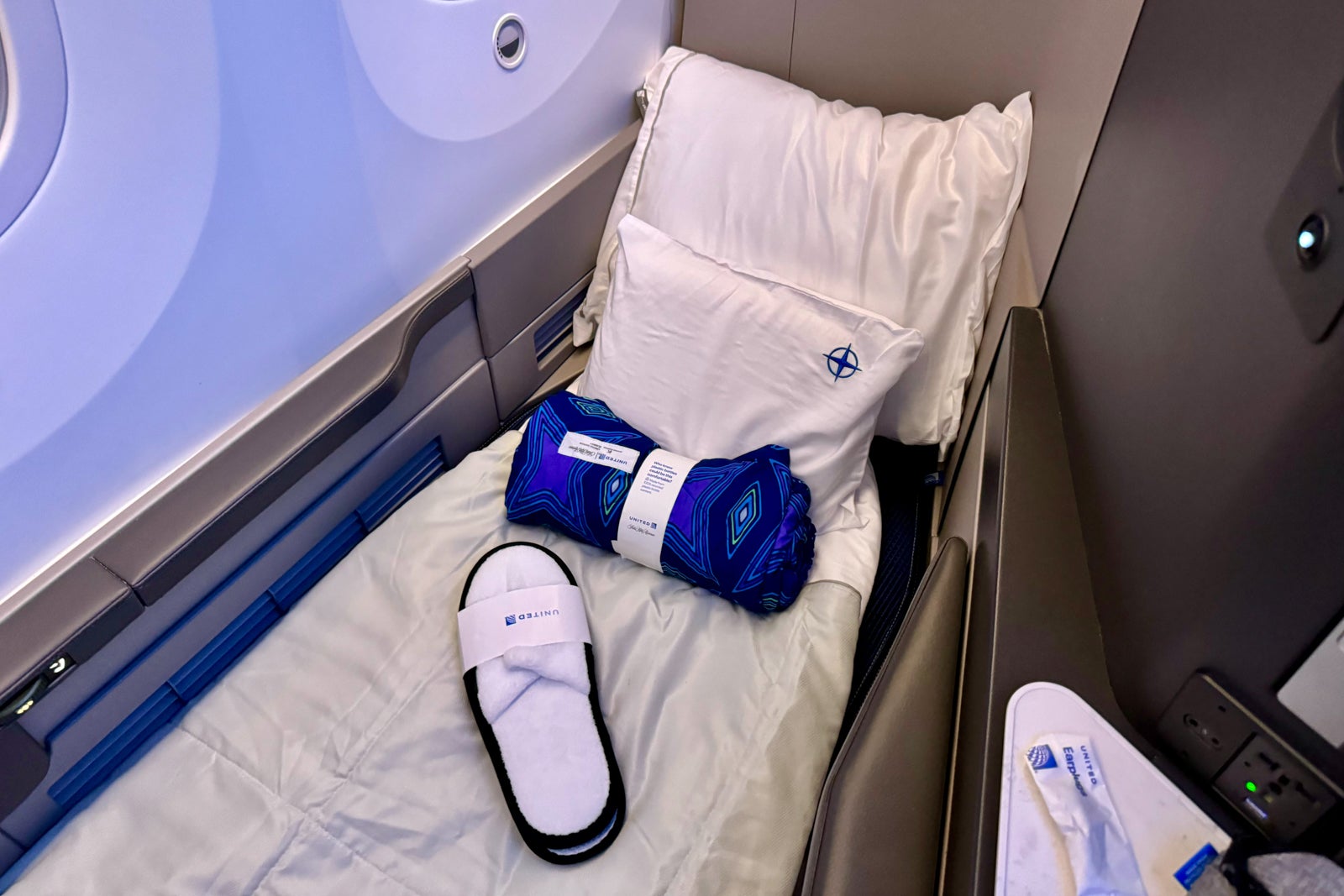There are many advantages to using transferable points like Chase Ultimate Rewards points over using a specific airline or hotel currency, including flexibility, flexibility, and… flexibility. You’ll get more value for your points when you can choose which partner within a single alliance to transfer to, and when you can explore alternate routes if there aren’t any award options on your first-choice itinerary. And you can decide whether to redeem your points for flights or hotels.
It should come as no surprise, then, that more than half of TPG’s major travel loyalty cards earn transferable bank points rather than individual airline or hotel points.
However, that doesn’t mean there’s no value in co-branded airline and hotel cards. While I put most of my spending into cards like the Chase Sapphire Reserve® and Chase Freedom Unlimited®, there are a few times when it makes sense to use a co-branded card over a more flexible alternative.
Here are the times when I prefer a co-branded card over a system that allows you to accumulate transferable points.
Get hard-to-earn miles
While Chase Ultimate Rewards points and Amex Membership Rewards points give you combined access to well over 20 hotel and airline transfer partners, not all miles can be easily earned from transferable cards. A prime example of this would be Alaska Mileage Plan miles. TPG’s August 2024 valuations peg them at 1.55 cents each, just below Chase and Amex Flex Points (at 2.05 and 2 cents each, respectively). They get this high score for the incredible sweet spot redemptions they can help unlock, including US-Asia in JAL or Cathay Pacific business class for just 75,000 miles one-way.

The only points that can be transferred to Alaska are Bilt Rewards points and Marriott Bonvoy points, and you’ll get a benefit by spending directly on Alaska Airlines Visa Signature® Credit Card. This card is offering a limited-time Buy One, Get Another, taxes and fees only offer ($0 fare plus $23 taxes and fees) and 50,000 bonus miles after you spend $3,000 or more in purchases within the first 90 days of opening your account. This bonus is worth $775 based on TPG’s August 2024 valuation, which will get you more than halfway to a luxury flight.
When it comes to Marriott points, they fall into a gray area in terms of terminology. While Marriott cards are “co-branded” (even if they’re issued by Chase or Amex, they earn hotel points), those points are highly flexible and can be transferred to as many as 45 airline partners. These cards are no longer as valuable as they once were for everyday, non-bonus spending.
However, if you have a specific redemption in mind, like a dream flight in Emirates first class or an over-the-water bungalow somewhere far away, it might make sense to sacrifice a higher overall earning rate to earn the specific points you need.
Related: Best Marriott Hotels in the World

Daily Newsletter
Reward your inbox with TPG’s daily newsletter
Join over 700,000 readers for breaking news, in-depth guides, and exclusive offers from TPG experts
Earn a welcome bonus
In addition to annual fees, credit card issuers make a large portion of their profits from exchange fees (swipe fees), and they are constantly looking for ways to incentivize you to use your cards more. With co-branded cards, this often comes in the form of welcome bonuses for new applicants.

Most cards offer a large welcome bonus if you spend a certain amount within a specified period of time. For example, the United℠ Explorer Card offers 50,000 bonus miles after you spend $3,000 within the first three months.
This bonus is worth $675 based on TPG’s August 2024 valuations and can get you a Polaris business class ticket to select destinations worldwide.
If you have a big purchase coming up, you can open a new co-branded credit card and use the purchase to accumulate a series of points or miles that you could earn over the course of years with everyday spending.
Related: Best Credit Card Welcome Offers of the Month
Travel Benefits
Aside from welcome bonuses, one of the best reasons to keep co-branded credit cards open long-term is because of the brand-specific perks they offer. For co-branded hotel cards, that might be a free anniversary night or elite status. For co-branded airline cards, it might include free checked bags and priority boarding on the airline. Many co-branded cards link these perks directly to your loyalty account, but for some, you actually have to charge your travel to the card to earn them. United, for example, typically won’t recognize the first free checked bag that comes with the United Explorer card if you book your ticket with a different card.
Of the many airline credit cards that offer discounts on in-flight purchases, all specify that you must use that specific card to receive the discount. A 20-25% discount far exceeds the return you’d get from a flexible travel card like the Chase Sapphire Reserve, which comes in at 6.15% (3 points per dollar, or 2.05 cents each).
Another example of a good time to invest in a co-branded card is when you need to spend to reach a free night reward or elite status. For example, Hilton Honors American Express Surpass® Card The card offers a free night after spending $15,000 in a calendar year.

Keep in mind that this is a large chunk of spending, and for most of us, it would take careful planning throughout the year to achieve. It’s important to consider the opportunity cost of putting that spending on a single card, and if you’re chasing status, how much value you’ll get if you’re unable to qualify organically.
Related: Hilton Free Night Reward Redemptions: The 10 Best Hotels in the World to Use Your Reward Certificate
Best earning rates in hotels
Most airline co-branded credit cards offer a paltry double points on flights booked with that specific airline, and you can easily do better with a card like the Chase Sapphire Reserve or The Platinum Card® from American ExpressBut co-branded hotel credit cards offer much higher earning rates and can be the most valuable way to book your stays.
To keep things simple, I’ll compare all of these cards to the Chase Sapphire Reserve and its 6.15% return (3 points per dollar) on hotel bookings (it offers 3 points per dollar on travel, including hotels). The chart below shows how rewarding hotel credit cards can be when used for stays at that specific chain.
Yields are based on TPG valuations as of August 2024.
Hilton Honors American Express Aspire Card information was collected independently by The Points Guy. The card details on this page have not been reviewed or provided by the card issuer.
By not using Sapphire Reserve, you’ll be sacrificing some perks like travel insurance, but the increased rewards may be worth it. Marriott cards (all of which earn 6 points per dollar at Marriott hotels) may also be a better value than Sapphire Reserve. While TPG’s August 2024 valuations peg those points at 0.6 cents each, it’s easy to get several times that value if you switch to airline partners for premium cabin rewards.
Related: How to Choose a Hotel Credit Card
Prevent rewards from expiring
One of the challenges of travel rewards (especially difficult for those who travel internationally frequently) is keeping track of small mileage balances across multiple accounts and preventing them from expiring.

Most airlines simply require you to have some sort of mileage activity every 1-2 years (terms vary by program), and so when someone’s miles are about to expire, I often hear people suggest transferring the 1,000 minimum points from Chase or Amex to keep the miles active. This definitely works, but if you don’t plan on using the miles anytime soon, you’ve just wasted 1,000 valuable miles that you could have used elsewhere.
A much easier option, if you have the right co-branded card, is to simply walk into a convenience store and buy a pack of gum or any other small purchase. You’ll earn a few miles on your statement, which should be enough to reset the expiration date on your loyalty account. Keep an eye on your calendar and make sure your statement closes/miles post before the expiration date.
In conclusion
We don’t recommend building your rewards strategy around co-branded cards, but there are scenarios where they can be useful outside of the welcome bonus. You’ll find more generous perks and bonus tiers with flexible point cards, but co-branded cards can offer uniquely valuable rewards at the specific airline or hotel that issues them. If you’re loyal to a single airline or hotel, engaging directly with their individual credit cards can help you increase your profits.
Related: How to Choose the Right Travel Credit Card for You





